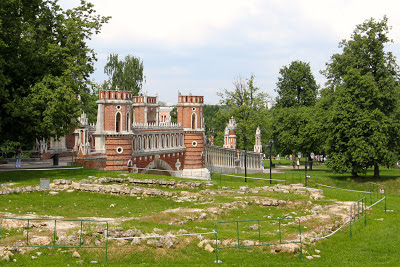Tsaritsyno is an estate in the southern part of Moscow around the Tsaritsyno ponds. Covering 550 hectares, it is Moscow's largest reserve and a national monument. It was built in pseudo-Gothic style by architects Vasily Bazhenov and Matvei Kazakov and the park includes pavilions, gazeboes, grottoes and bridges.
An 8km cascade of ponds around the area was built during the time of Boris Godunov. The village belonged to the noble family of the Streshnevs, princes Golitsyn. In 1713, Peter I gave the village to Prince Dmitry Kantemir of Moldavia. In 1775, Catherine II bought the estate to build a retreat, which is why it's called Tsaritsyno (literally, "the Tsarina’s").
The Empress gave the commission to Russian architect Vasily Bazhenov, who designed the palace in a "Moorish-Gothic" style. The parks were laid out by English garden designers, I. Murno and F. Reed.
However, Catherine was not happy with the result and In 1785, when construction was nearly finished, she ordered Bazhenov’s buildings to be demolished. She commissioned another architect, Matvei Kazakov, to build a new palace.
When Catherine II died in 1796, work had been going on for 10 years, but there was no further building for another two centuries. The estate went through various uses and finally became a Moscow district. In 1984, restoration of the buildings and landscape parks were launched to establish a State Museum of Decorative and Applied Arts of the Peoples of the USSR. The palace was finally completed in 2005, and opened to the public in September 2007.















No comments:
Post a Comment